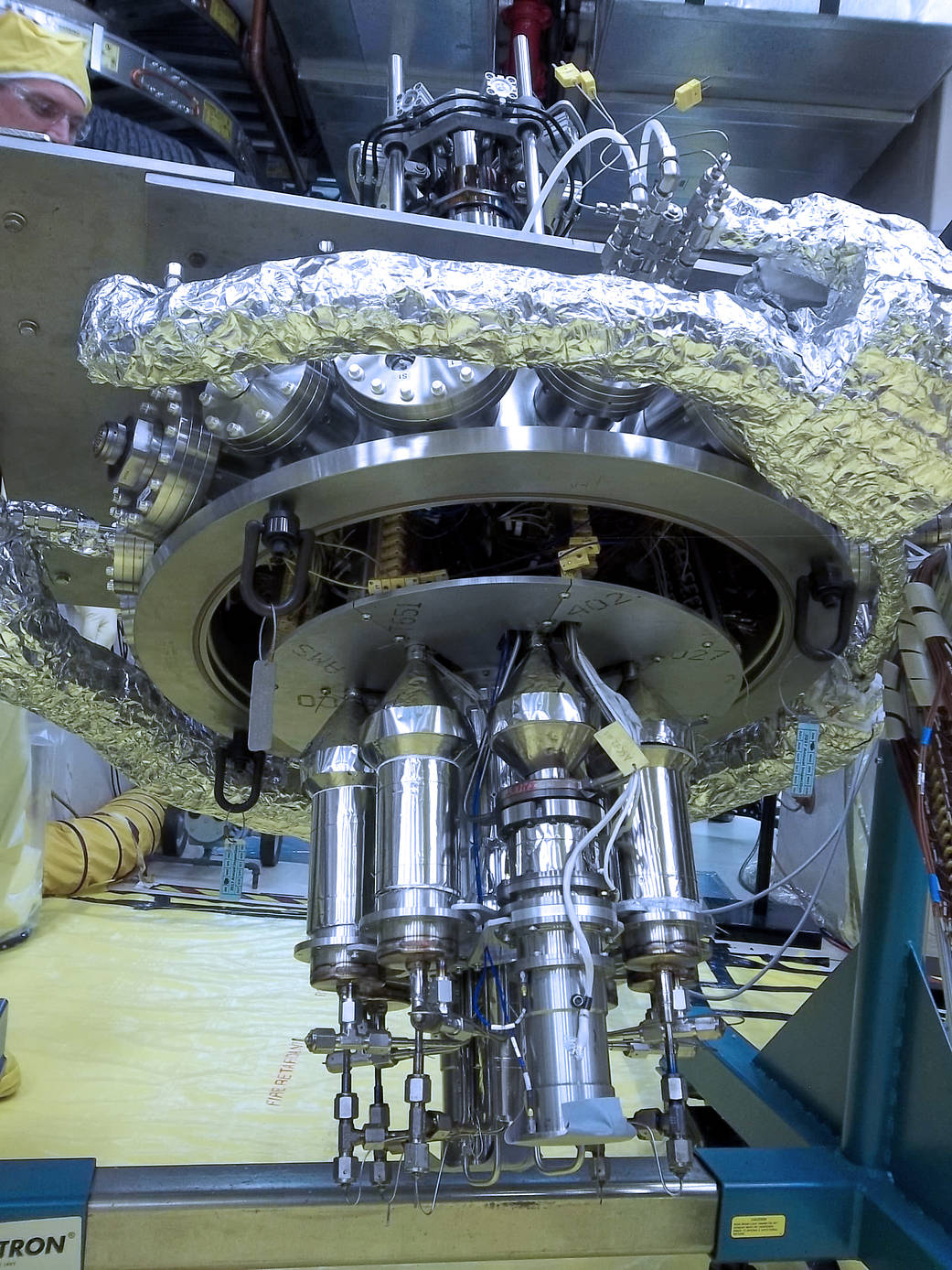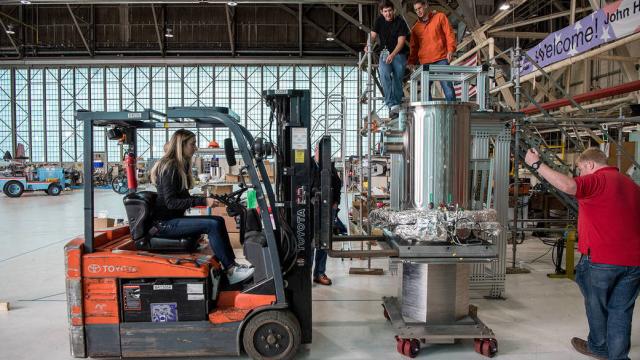NASA announced today that it has completed tests of its Kilopower portable nuclear fission reactor, a device designed to one day power bases on Mars or the Moon. The tests met or exceeded expectations on all metrics, which means the device can now go on to more serious flight testing.
Kilopower test unit. Photo: NASA
The Kilopower device is still a prototype, but will be important for space expeditions where astronauts can’t bring enough supplies on their ship and must still generate power far from Earth.
“We need to think about the resources required to stay and explore,” NASA Glenn Research Center director Janet Kavandi said at the press conference. “As we move further into the solar system, there will come a point where carrying all the materials needed or attempting to resupply becomes hazardous. At this point, our explorers will need to be able to generate their own resources,” such as water, oxygen and rocket fuel, she said.
Kilopower would help them achieve those goals.
NASA has been running its Kilopower test, called KRUSTY (Kilopower Reactor Using Stirling TechnologY), at the US Department of Energy’s Nevada National Security Site. Kilopower is a prototype miniature nuclear fission reactor that uses a 15cm chunk of uranium-235 as fuel. Fission reactions in the core generate heat, which the device converts into electrical energy.
The team exceeded their own expectations with a modified test unit that output greater than four kilowatts of power at an operating temperature of 800C, with a power conversion efficiency of 35 per cent.
The device should be scalable to its 10-kilowatt output goal. Four such reactors would be needed to fuel a Martian outpost, according to a NASA release.

Kilopower test unit. Photo: NASA
Additionally, the design is the first new reactor of any kind in the United States in 40 years, explained David Poston, the chief reactor designer at the National Nuclear Security Administration’s Los Alamos National Laboratory. It has only cost the team $US20 million ($27 million) to come this far.
The reactor is simple and safe, said Poston, and the only radiation emitted when it’s turned off is low background from the uranium core, too low to be harmful. When it’s turned on, its simple, self-regulating mechanism makes it safe and low maintenance, too. “Astronauts aren’t going to want to sit at a reactor control system the whole time,” he noted.
Kavandi explained that Kilopower is part of the agency’s grander plans, which include the Orion Spacecraft and Space Launch System, as well as its lunar gateway to be used as a hub for research and deeper space exploration.
The Kilopower team will continue performing risk-mitigation studies over the next 18 months to prepare the device for flight testing.
[NASA]
